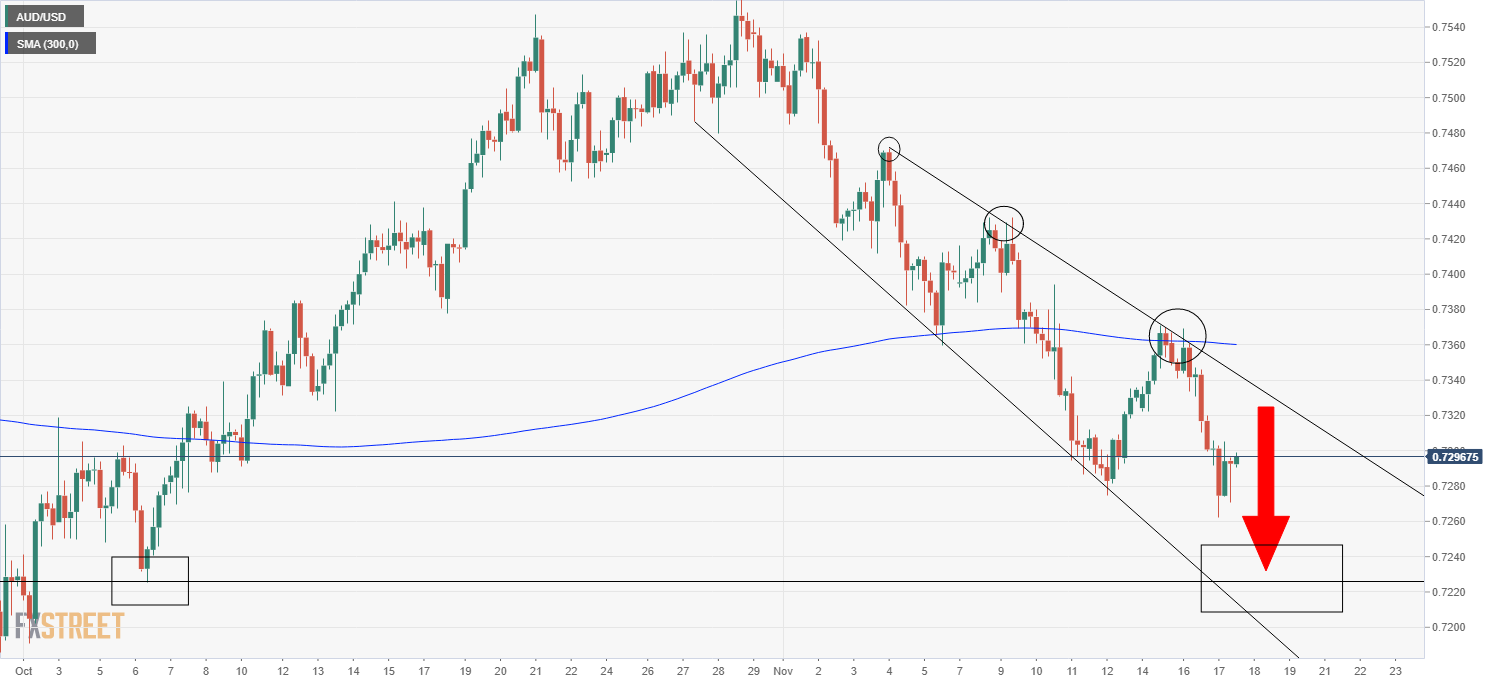AUD/USD continues to languish under 0.7300 as weak Aussie wage growth supports RBA dovishness
- AUD/USD continues to languish below the 0.7300 level in wake of not as strong as hoped Australian wage price growth.
- Analysts said the data supports the RBA’s dovish stance.
AUD/USD continues to struggle to reclaim a hold of the 0.7300 level, after the pair took a hit during Asia Pacific trade following not as strong as hoped for data on Australian wage price growth. The pair printed lows is the 0.7260s during the APac trade and then rejected an attempted move above 0.7300 shortly prior to the start of the European session. AUD/USD then fell back to the 0.7270s but has since recovered (again), though the pair has not been able to push back above 0.7300 just yet.
At current levels, the pair trades with losses of about 0.1% on the day, though is down about 0.5% on the week. The US dollar has been surging higher in recent sessions boosted by strong US data and an associated hawkish Fed tightening bets. But these gains have been concentrated against the low-yielding euro, yen and Swiss franc and less so against more risk-sensitive currencies like the Aussie. The US dollar’s surge has eased on Wednesday as traders take a breather ahead of more US data at 1330GMT (this time housing data), more Fed speak (six FOMC members are scheduled to appear) and a 20-year bond auction.
In terms of the technical outlook, while intra-day trading conditions remain consolidative and rangebound, the long-term outlook continues to look negative. AUD/USD failed to break to the north of its 50-day moving average, as well as to the north of descending trendline that has been capping the action since the start of the month on Monday. Thus, it seems likely that the path of least resistance for the pair is to continue heading lower. Technicians may target the 6 October low at 0.7225 as the next stop.

Sluggish Aussie wage growth supports RBA dovish stance
The Australian Wage Price index rose at 2.2% YoY in Q3, in line with economist forecasts. There had been some outside calls that the data would surprise to the upside and put pressure on the RBA to start hiking interest rates in 2022. The chief Australia economist at HSBC Paul Bloxham told Reuters that “it's clear that wages growth is well below the 3-4% rates that were the norm a decade ago and the sorts of rates the RBA needs to believe that inflation will sustainably run at 2-3%”. “Today's figures support the RBA's dovish perspective and our own view on the cash rate outlook - our central case has no hikes in 2022 or 2023” Bloxham added.
